by Ken Sehested
Text: Habakkuk 2:1-3 “I will stand at my watchpost, and station myself on the rampart; I will keep watch to see what he will say to me, and what he will answer concerning my complaint. Then the Lord answered me and said: Write the vision; make it plain on tablets, so that a runner may read it. For there is still a vision for the appointed time; it speaks of the end, and does not lie. If it seems to tarry, wait for it; it will surely come, it will not delay.”
Why do we devote special attention to the “saints,” to those gone before us, to people like Martin Luther King Jr.? When we focus on particular people, don’t we run the risk of turning them into HEROES? By giving certain individuals special attention, don’t we risk distancing ourselves from them? Few if any of us feel heroic. We’re not like Superman: faster than a speeding bullet, more powerful than a locomotive, able to leap tall buildings in a single bound. If saints—hero’s of the faith—are so unlike us, can they be of any use, other than as objects of fantasy whom we put on a pedestal to admire? But also to collect dust?
The poet Carl Wendell Hines Jr. once wrote of King:
Now that he is safely dead
let us praise him
build monuments to his glory
sing hosannas to his name.
Dead men make
such convenient heroes. They
cannot rise
to challenge the images
we would fashion from their lives.
And besides,
it is easier to build monuments
than to make a better world.
So, now that he is safely dead,
we, with eased consciences
will teach our children
that he was a great man . . . knowing
that the cause for which he died
is still a dream,
a dead man’s dream.
Often, when we declare someone a saint, it means we don’t have to take what they said and did very seriously. Because, well, they were saints . . . and we’re not saints. Instead of being conduits for the Spirit to get a hold of our lives, we turn our attention instead to heaping praise on them. Adoration becomes a way of dodging the challenge they pose for us.
So, yes, there is a danger of declaring people “saints.” It’s the same danger we face when we acknowledge Jesus as Lord, as Savior. By doing so, vigorously, we exempt ourselves from being implicated in Jesus’ mission. We build churches as memorial societies rather than training camps.
So, yes, saints are important, because they give us flesh-and-blood pictures of who God is and what God wants us to do.
Who was Martin Luther King Jr.? He was born in 1929 in Atlanta. If he were still living, last Wednesday would have been his 74th birthday. Not many people know that his recorded name at birth Michael Luther King. It was a record-keeping error that wouldn’t be corrected until he was 28 and applying for a passport. He graduated from Morehouse College in Atlanta, among the more prestigious historically-black schools. After that he entered Crozer Theological Seminary, then located in Pennsylvania; and then on to Boston University where he earned a doctorate in theology. In 1954, at the age of 26—eight months before his doctorate was conferred—he was installed as pastor of the Dexter Ave. Baptist Church in Montgomery, Alabama, accompanied by his new wife, Coretta, who had planned a career as an opera singer. His pulpit stood directly across the square from the state capitol, the very place from which, in 1861, Jefferson Davis was inaugurated president of the Confederate States of America and from which the Confederate flag and its white supremacist message were first unfurled.
On Dec. 5, 1955, barely more than a year after Martin and Coretta took up residence in Montgomery, and only two weeks after the birth of their first child, a department store seamstress by the name of Rosa Parks engaged in a spontaneous bit of civil disobedience that would radically alter the King family life, the life of the South, of the nation, even the whole world. In the months and years to come, Martin King would have his home bombed, would repeatedly experience the humiliation and intimidation of being jailed, would be stabbed, stoned, shouted down and, finally, shot down. It all ended, on April 4, 1968, on the balcony of a hotel in Memphis, Tennessee.
Martin Luther King Jr. was a man with a mission from God. He had a dream, he told us—a vision that began with the simple demand that black folk have equal access to city bus seats. Such a modest demand! Such a minimal goal!! But that initial strategic goal soon expanded to equal accommodation at lunch counters, on interstate buses, in the voting booth and equal opportunity in the larger economic life of the nation. And, at least for King himself, opposition to the war in Vietnam.
Most in our nation and in the world remember Dr. King as a proponent of civil rights, as a Nobel Peace Prize recipient, as a social reformer and an unlikely political force. But we should never forget that he was, first and foremost, a preacher, a Baptist preacher at that, and that his dream was rooted not so much in the American dream (although he made those connections) but a Gospel dream, in the God-driven and Spirit-fired vision of Scripture.
We miss the significance of the civil rights movement if we attribute everything to Dr. King. In fact, if one studies the record carefully, it is amazing to note that most of the major civil rights movement campaigns were actually initiated by others. And King was initially resistant to many of the projects in which he became involved and which he came to symbolize.
The Montgomery Bus Boycott is a good case in point. it was Rosa Parks, a seamstress, who ignited that episode. It was E.D. Nixon, a railroad porter in Montgomery, who accomplished much of the initial strategy to make Rosa Parks’ case a legal test. When the prominent black preachers of the city gathered to discuss what to do, at first they didn’t want to do anything. It was Nixon (an “ordinary” layperson) who effectively shamed them into having the courage to go public with the plan.
It was Jo Ann Robinson, a professor at the local black college and president of the Montgomery Black Women’s Council, who first suggested the idea of a bus boycott. She and her colleagues literally stayed up all night mimeographing leaflets to inform the African American community of boycott plans.
King was chosen as the first president of the Montgomery Improvement Association, the boycott organization’s name, not because of his seniority or political standing. In fact, he was the new kid on the block, a peon in the preacher fraternity’s pecking order, only 26 years ago. He became the default candidate precisely because he was still unaligned in among that legendary fractious and turf-minded group of pastors.
At the time, King himself was hardly a mature proponent of nonviolence. Sure, he had studied Gandhi. But also Reinhold Niebuhr, the most effective spokesperson for justifying violence in the name of justice. Not long after the boycott got underway and violence by whites came unleashed, an out-of-town guest at King’s home nearly sat down on a pistol lying in the chair. King was scared, just like you and I would have been.
A lot of things succeeded in the civil rights movement that shouldn’t have. King’s predecessor at Dexter Ave. Baptist Church had previously attempted a bus boycott but failed. An earlier bus boycott in Baton Rouge, Louisiana, lasted only a couple weeks before it fell apart. The famous lunch counter sit-in movement, which took off after student efforts in Greenville, N.C., was spontaneous and undertaken without the blessing or even advance knowledge of any national civil rights organization and lacked any ongoing strategy. In fact, it had been attempted earlier in Oklahoma City without success. the notorious “Freedom riders” were first commissioned in 1942 by the Congress on Racial Equality based in Chicago. But it didn’t spark a movement.
King’s well-known “Letter from a Birmingham City Jail” was first drafted by hand in the margins of newspapers smuggled into his prison cell. It would be more than a month before any major publication would consider it worthy of printing.
The historic 1963 March on Washington was the brainchild of A. Philip Randolph, head of the powerful Brotherhood of Sleeping Car Porters Union. After the march, only one major newspaper even mentioned King’s “I Have a Dream” speech.
Only a handful of King’s major engagements were planned in advance. In most, he simply found himself to be the right person at the right time in the right place. Even his final engagement, supporting striking sanitation workers in Memphis, was felt by his colleagues to be a drain on precious time needed for the Poor People’s Campaign preparation. He went anyway. And his mounting concern about the war in Vietnam, which led to his outspoken opposition in a now-famous sermon precisely one year before his assassination, was bitterly criticized by most other civil rights leaders, including many in his own organization.
Saying all this is not to undermine King importance to the movement, but to set it in perspective. There were countless others who played crucial roles at timely moments. We know some of their names. Most, though, would be unfamiliar to us.
Diane Nash, leader of the very effective movement of students in Nashville at the time and herself among the unheralded leaders of the larger movement, says it well in her memoir:
“If people think that it was Martin Luther King’s movement, then today they—young people—are more likely to say, ‘gosh, I wish we had a Martin Luther King here today to lead us.’ If people knew how that movement started, then the question they would ask themselves is, ‘What can I do?’”
As much as anyone, Dr. King’s life is a testimony to the way in which spiritual formation and prophetic action are linked. We tend to segregate personal transformation from public transformation, piety from politics. But to effectively engage the political and economic forces of oppression—what King referred to as the triple threats of racism, materialism and militarism—requires very personal spiritual transformation. As Gandhi himself once wrote out of his struggle to free India from British imperial control: I constantly have to struggle on three fronts at the same time: with the British, with members of my own movement, and with myself.
King himself went through one very dramatic and very personal transforming experience. Several weeks into the Montgomery boycott, exhausted from attempting to be a pastor, a husband and father of a young child, and director of the local movement; and after a relentless stream of harassing and obscene phone calls, King finally got what he considered a genuine death threat.
“Just as I was about to doze off, the telephone rang. An angry voice said, ‘Listen, nigger, we’ve taken all we want from you; before next week you’ll be sorry you ever came to Montgomery.’” He got out of bed and went to the kitchen to make some coffee. As he sat at the table he began thinking of how he could get out of this involvement without appearing to be a coward. In other words, how could he gracefully back out?
“In this state of exhaustion, when my courage had all but gone, I decided to take my problem to God. With my head in my hands, I bowed over the kitchen table and prayed aloud. The words I spoke to God that midnight are still vivid in my memory. ‘I am here taking a stand for what I believe is right. But now I am afraid. The people are looking to me for leadership, and if I stand before them without strength and courage, they too will falter. I am at the end of my powers. I have nothing left. I’ve come to the point where I can’t face it along.’
“At that moment I experienced the presence of the Divine as I had never experienced Him before. It seemed as though I could hear the quiet assurance of an inner voice saying: ‘Stand up for righteousness, stand up for truth; and God will be at your side forever.’ Almost at once my fears began to go. My uncertainty disappeared. I was ready to face anything.’”
Dr. King’s dream, echoing the dream of which Jesus spoke when he talked about the coming Reign of God, is still a dangerous dream. But they’ve both been domesticated in our day. Dr. King is honored in our nation with an official holiday. Military bands now march down Auburn Ave. in Atlanta as part of the King holiday parade, and military jets fly over the marchers. Movements have a way of becoming museums. The dream which once threatened the privilege of the powerful has itself been co-opted, marketed for seasonal consumption and packaged for profit. Did you know that the world’s largest media conglomerate, AOL-Time Warner, now owns the copyright to all of King’s writings?
Which is why we need to underscore the fact that admiring Dr. King’s dream is not the same as being captured by it. The dream tarries; it contains unfinished business. We have inherited an ongoing struggle.
In other words, it is quite possible—likely, in fact—that it is possible to respect the man and relinquish the mission. It’s still possible to revere the day and renege on the dream. We forget, for instance, that in his sermon opposing the Vietnam war King went so far as to say that “America is the greatest purveyor of violence in the world.”
He also said: “The past is prophetic in that it asserts loudly that wars are poor chisels for carving out peaceful tomorrows. One day we must come to see that peace is not merely a distant goal that we seek, but means by which we arrive at that goal. We must pursue peaceful ends through peaceful means.”
And he said: "In the days ahead we must not consider it unpatriotic to raise certain basic questions about our national character. We must begin to ask, 'Why are there [tens of] millions of poor people in a nation overflowing with such unbelievable affluence? Why has our nation placed itself in the position of being God's military agent on earth…? Why have we substituted the arrogant undertaking of policing the whole world for the high task of putting our own house in order?'"
These and similar thoughts are especially relevant today as our nation’s leaders press for war in Iraq and elsewhere. Also: I can assure you that most of the officially-sponsored King birthday celebrations in our nation will edit these parts of his testimony.
If the vision is slow, if it tarries, wait for it, it will surely come. Let me close with one final comment from King about the implications of dreaming God’s dream:
“ I know you are asking today, “how long will it take” I come to say to you however difficult the moment, however frustrating the hour, it will not be long, because truth pressed to earth will rise again.
How long? NOT LONG, because no lie can live forever.
How long? NOT LONG, because you still reap what you sow.
How long? NOT LONG, because the arm of the moral universe is long but it bends toward justice.
How long? NOT LONG, ‘cause my eyes have seen the glory of the coming of the Lord.
# # #
©Ken Sehested @ prayerandpolitiks.org
19 January 2003, Circle of Mercy Congregation, Asheville NC
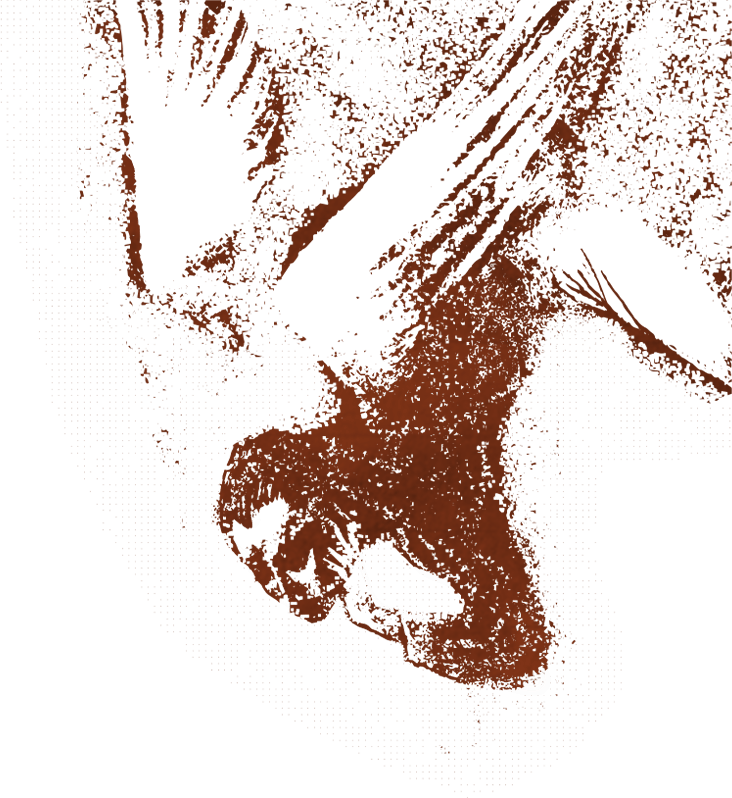
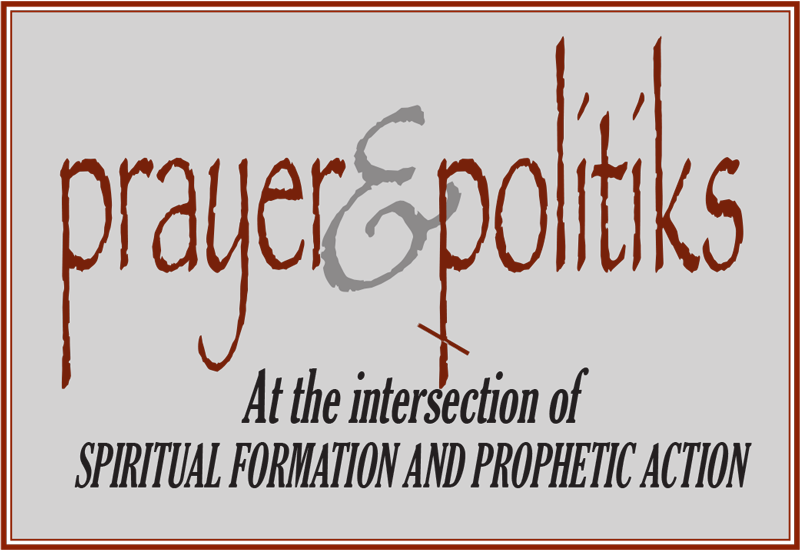
 in the face of threat, / jubilant in the grip of grace. / May your hands remain open, / caressing, never clenched, / save to pound the doors / of all who barter justice / to the highest bidder.” —continue reading Ken Sehested’s “
in the face of threat, / jubilant in the grip of grace. / May your hands remain open, / caressing, never clenched, / save to pound the doors / of all who barter justice / to the highest bidder.” —continue reading Ken Sehested’s “ Proclamation.” —Continue reading Ken Sehested’s “
Proclamation.” —Continue reading Ken Sehested’s “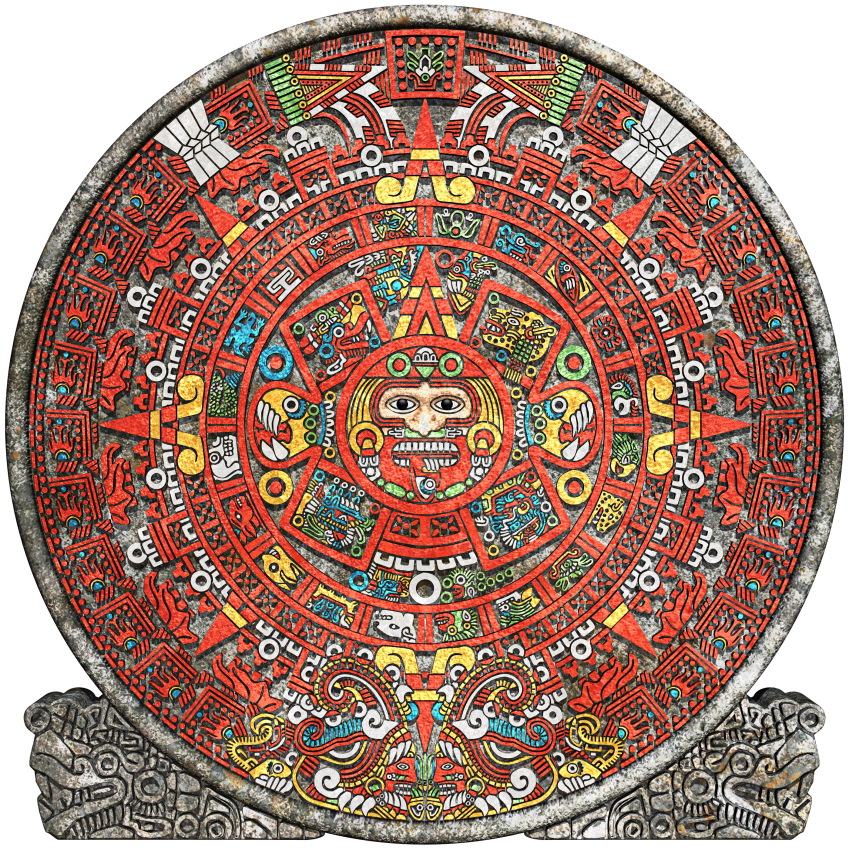 the Olive Garden, for instance, will run you $400. Of course that includes an open bar, all-you-can-eat buffet, DJ and dancing and champagne toast at midnight. (I’m guessing bread sticks, too.)
the Olive Garden, for instance, will run you $400. Of course that includes an open bar, all-you-can-eat buffet, DJ and dancing and champagne toast at midnight. (I’m guessing bread sticks, too.) calendar for commercial and international relations.
calendar for commercial and international relations.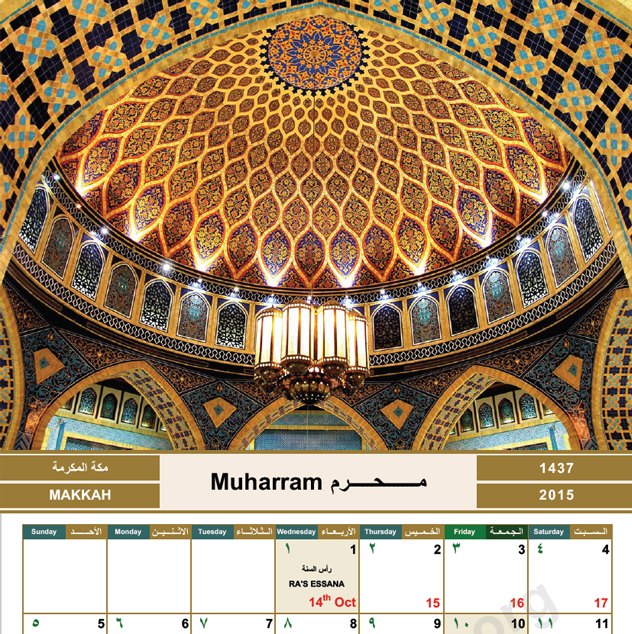 know died in 4 BCE. Most estimates are that Jesus was born between 4-6 BCE in the Gregorian calendar.
know died in 4 BCE. Most estimates are that Jesus was born between 4-6 BCE in the Gregorian calendar.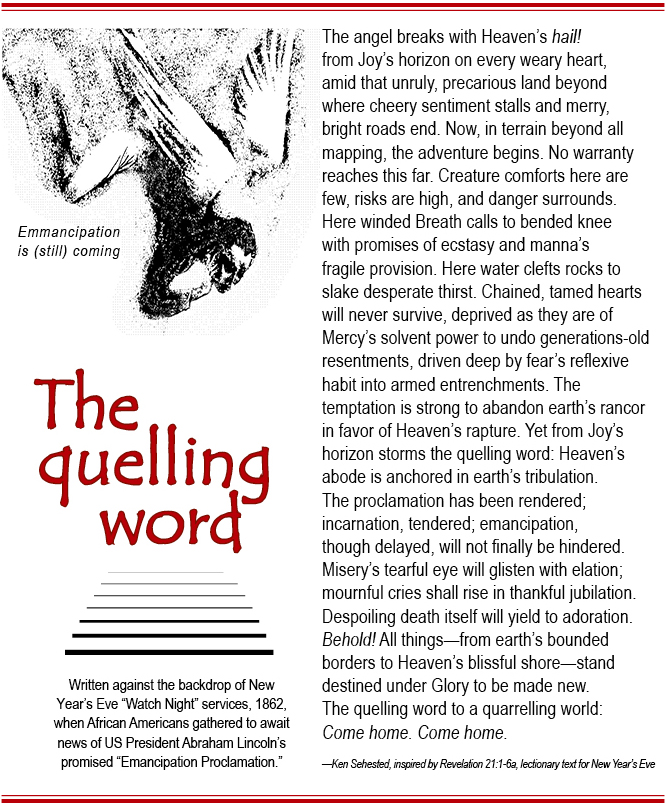 Reckoned by the Gregorian calendar, that year was 622 CE.
Reckoned by the Gregorian calendar, that year was 622 CE.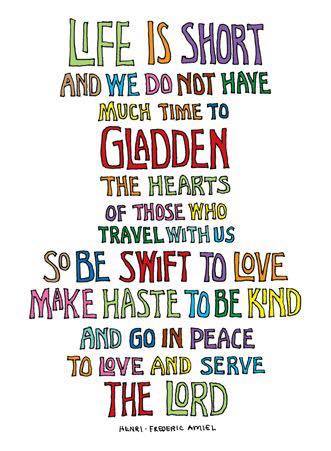 makes sense, because every dominant system will claim that what is possible is limited to what is available. People of faith believe otherwise; but in order to move forward a kind of retraction is needed. For many Christians, the inaugural act of this retraction exercise is signified by baptism. . . .” —continue reading Ken Sehested’s “
makes sense, because every dominant system will claim that what is possible is limited to what is available. People of faith believe otherwise; but in order to move forward a kind of retraction is needed. For many Christians, the inaugural act of this retraction exercise is signified by baptism. . . .” —continue reading Ken Sehested’s “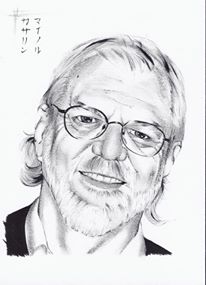 • “
• “ peddler of gun-wielding promise of power.” —continue reading Ken Sehested’s “
peddler of gun-wielding promise of power.” —continue reading Ken Sehested’s “ known as Eid Milad ul-Nabi (more commonly, Mawlid), is when Muslims celebrates the Prophet birth in the Islamic month of Rabi' al-awwal, the year 570 CE in the Gregorian calendar, in Mecca. (Since Islam uses a lunar calendar, the yearly dates for special observances move in relation to the Gregorian calendar.) Celebrations of Mohammad's birthday, a public holiday in many Islamic countries, vary greatly in different parts of the Islamic world.
known as Eid Milad ul-Nabi (more commonly, Mawlid), is when Muslims celebrates the Prophet birth in the Islamic month of Rabi' al-awwal, the year 570 CE in the Gregorian calendar, in Mecca. (Since Islam uses a lunar calendar, the yearly dates for special observances move in relation to the Gregorian calendar.) Celebrations of Mohammad's birthday, a public holiday in many Islamic countries, vary greatly in different parts of the Islamic world.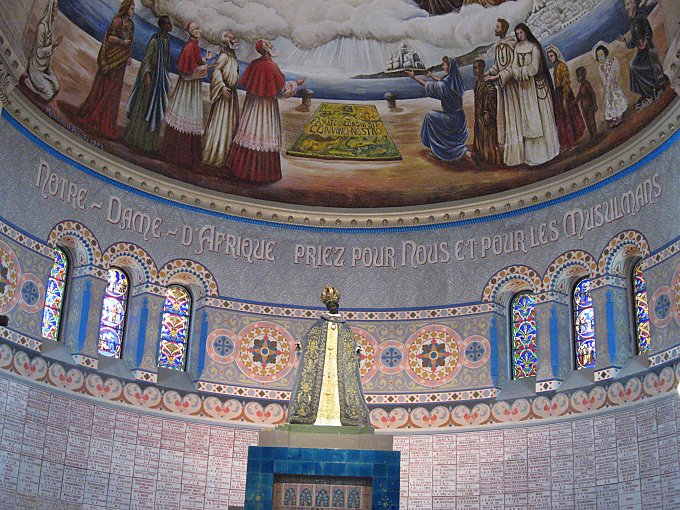 Lady of Africa, pray for us and for the Muslims”).
Lady of Africa, pray for us and for the Muslims”). ¶ This (see photo at left) is from where a new social consensus must emerge in order to change cultural habits and political policy. —photo at left of American City Diner sign in Washington, DC
¶ This (see photo at left) is from where a new social consensus must emerge in order to change cultural habits and political policy. —photo at left of American City Diner sign in Washington, DC


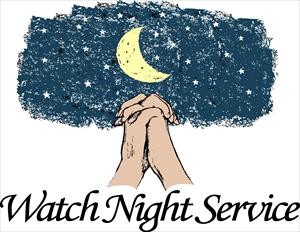 tradition, with New Year’s Eve services ending after midnight, marked by penitence over shortcomings in the year past and resolution of greater faithfulness in the year ahead. One of the observance’s functions was to provide an alternative to the drunken revelry common in Britain on that night.
tradition, with New Year’s Eve services ending after midnight, marked by penitence over shortcomings in the year past and resolution of greater faithfulness in the year ahead. One of the observance’s functions was to provide an alternative to the drunken revelry common in Britain on that night.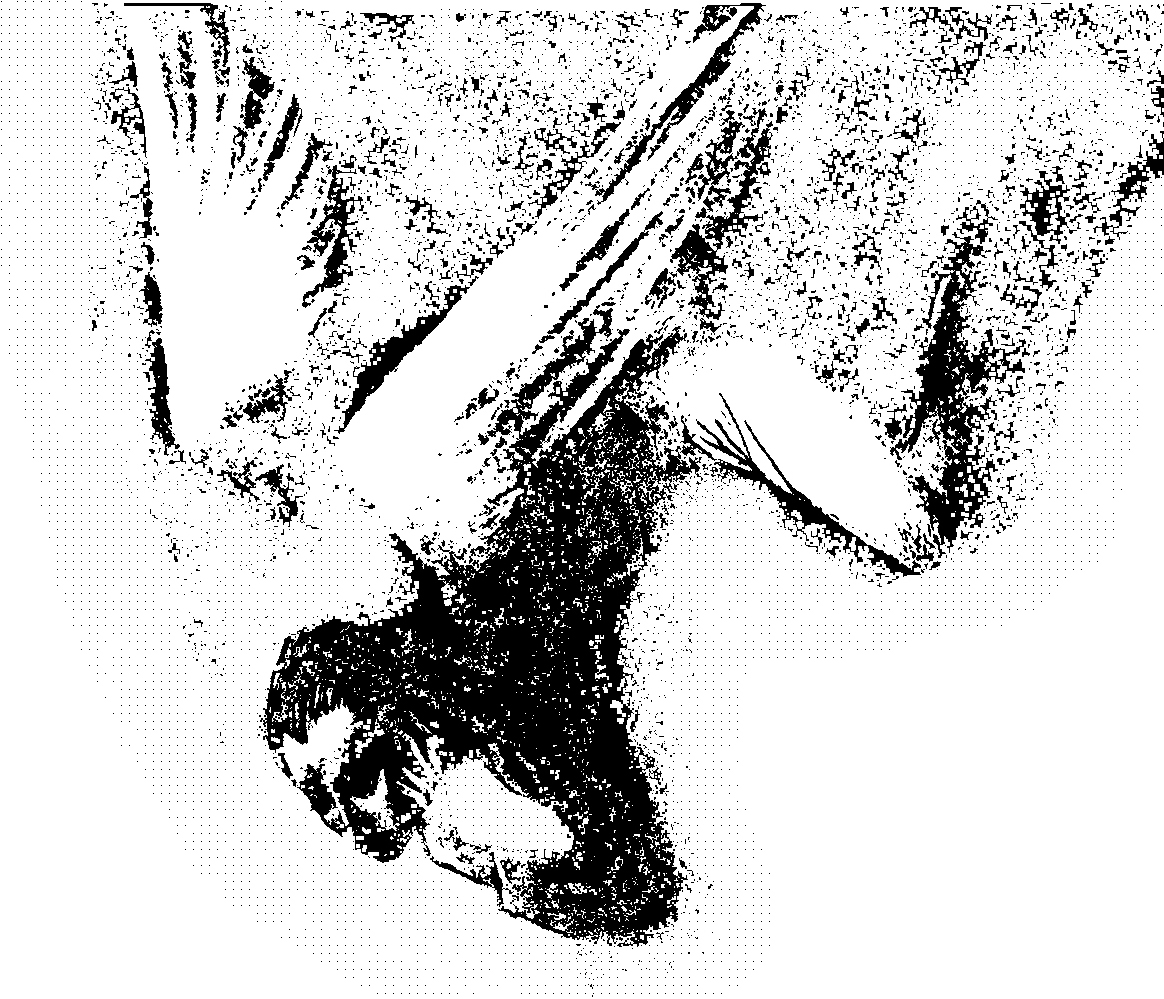 amid that unruly, precarious land beyond
amid that unruly, precarious land beyond